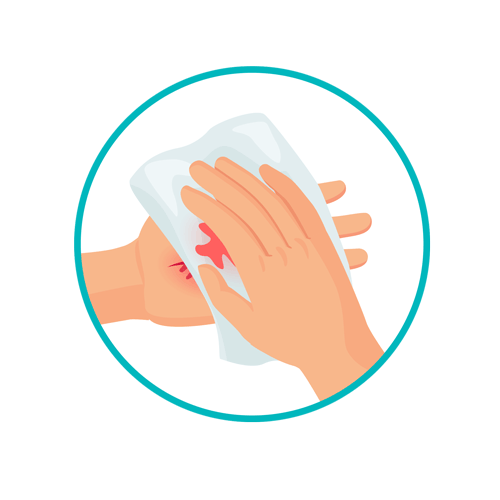How to Dispose of Non-Medicinal Sharps?

Throughout the UK and other countries around the world, sharps safety is essential for healthcare workers. So too is safety for the public waste bin collectors, and anyone else who handles this form of medical waste. In many cases, one equates “sharps” to needles used to deliver a drug or medicine of some sort, but non-medicinal sharps must also be disposed of properly to maintain compliance. Proper procedures must be followed for any ‘sharp’ object’ which might be contaminated with potentially infectious bodily fluids even with no medicines or chemicals on board.
What exactly are non-medicinal sharps?
A non-medicinal sharp can range from anything to a diabetes finger stick lancet too broken lab ampoules. In the healthcare industry, the term “sharps” implies anything with an edge or a sharp point that can cut or puncture skin. Such objects are not only found in hospital or clinical setting but in home healthcare environments, but, in a workplace, or even while traveling. A prime example is a lancet used to test blood sugar levels for diabetics.
A non-medicinal sharp might also include tubing connection needles and/or sets typically used for home-based patients undergoing hemodialysis, or the aforementioned lancets used to obtain a drop of blood to test and diabetic healthcare scenarios.
A medicinally-contaminated sharp is defined as one that might be contaminated with medicines or chemicals.
While both types of sharps (medicinal and non-medicinal) are most commonly used in the healthcare industry, they can also be found in a number of different settings including bakeries think bread knives), tattoo parlors (tattoo needles and tools), first-aid centres, and beauty salons (razors, scissors) and so forth.
Improper disposal of any kind of sharp also carries serious risks of transmission of common human infections including Hepatitis B, Hepatitis C, and Human Immunodeficiency Virus (HIV). Sharps are commonly used in public places such as restaurants, parks, or hotels. They can be used at school, while traveling, at work, at home, or a hospital or health care centre. As such, the importance of safe sharps disposal is not to be underestimated.
Any facility or business that uses sharps of any kind should dispose of them properly in a compliant sharps disposal container, which are puncture-resistant and leak-resistant, most commonly made of durable plastic siding. Such containers are found not only in healthcare environments, but in locations from business offices to airports.
Sharps injuries can occur anywhere – to personnel at the dental office, in laboratories, to physiotherapists, and radiography scenarios, just to name a few. Ancillary staff working in healthcare positions or those who handle healthcare waste or equipment are also at risk from non-medicinal sharps injuries in places where a healthcare worker has not properly or compliantly disposed of sharps.
Two types of transmission from non-medicinal sharps include percutaneous exposure such as exposure to objects ranging from tooth fragments to a trocar that has been contaminated with bodily fluids or blood contamination. Mucocutaneous exposure, or exposure to the mucous membranes of the eyes, or inside the mouth or nose is also a possibility.
What do the rules say?
Under UK governmental guidelines, non-medicinal sharps are defined as a clinical or hazardous waste, depending on whether it has been medicinally contaminated or not. Guidance for healthcare professionals can be found in the:
- Health and Safety (Sharp Instruments in Healthcare) Regulations 2013 publication
- Department of Health Environment and Sustainability Health Technical Memorandum 07-01: Safe Management of Healthcare Waste.
- Safer Needles Network
- European Biosafety Network
Primary requirements of sharps safety focus on injury prevention also fall under Control of Substances Hazardous to Health (COSHH) regulations, as is proper training and duty of employees to notify employers or healthcare professionals of any type of sharps accident or injury. To reduce risk of such injuries, sharps (even non-medicinal) should be properly segregated from other medical waste streams.
About sharps receptacles
Compliant waste receptacles should be made available not only in healthcare provider environments but in community-based environments such as households as needed. According to the Health Technical Memorandum, “sharps receptacles must be UN-type-tested and approved, tested and certified (based on transport packaging and operations – refer to BS 7320).
The guidelines also state self-medicating patients using sharps are no longer to dispose of sharps or lancets into typical household black-bagged waste streams. Healthcare providers should also advise patients who use sharps at home or other domestic properties that authorities can charge for collection of certain waste streams, based on Controlled Waste Regulations. This includes clinical waste and other healthcare waste that comes from a householder’s sharps receptacle.
In addition, community nurses are required to use appropriate sharp receptacles based on the type of waste generated, and adhere to proper colour-coded container disposal.
Proper training and guidance should be provided for any individual (professional healthcare provider or patient) utilizing sharps of any kind in a medical setting or home-based environment. Such training is only one approach to management of sharps injuries. Information, instruction and training should provide information regarding applicable precautions that should be used to protect themselves as well as others from injury. Such processes include safe use of the device, proper procedures for use, as well as compliant sharps disposal processes.
Studies have shown that the majority of sharps injuries occur when the sharp has been incorrectly disposed of, during transportation to a sharps container, or transported from point of use to final disposition.
Compliant sharps containers and bins are designed to prevent accidental spillage and overfilling. Just because a sharp object is not medicinally contaminated doesn’t mean that it can’t be infectious. Infection control measures must also be in place.
Compliance reduces risk of injury and fines
Consequences related to non-compliance with laws regarding sharps injuries are severe. In one scenario (2010), a hospital trust was fined more than £20,000 after one of its employees contracted Hepatitis C following a non-medicinal sharps injury. They were found guilty of non-compliance and breach of the Health and Safety at Work Act as well as the Control of Substances Hazardous to Health Regulations (HSC 2010).
Sharpsmart reduces sharps-related injuries
Use of Sharpsmart containers have successfully reduced sharps injuries in the UK by 87%, protecting staff, patients, and visitors in healthcare scenarios. Sharpsmart containers have a life span of 10 years, are ecologically sustainable, and encourage safe environmental practices. We provide several models and sizes for non-medicinally contaminated sharps as well as those that are medicinally contaminated.
Contact us today for information about our Sharpsmart containers and how use of our products has reduced our carbon footprint by reducing plastic container use by approximately 82 tonnes a year.
Let's Talk!
Your time is valuable, and we don’t want to play hard to get. You can either phone us directly on the details listed on our contact page, or feel free to fill out this short form and one of our team members will get back to you as quickly as possible.
